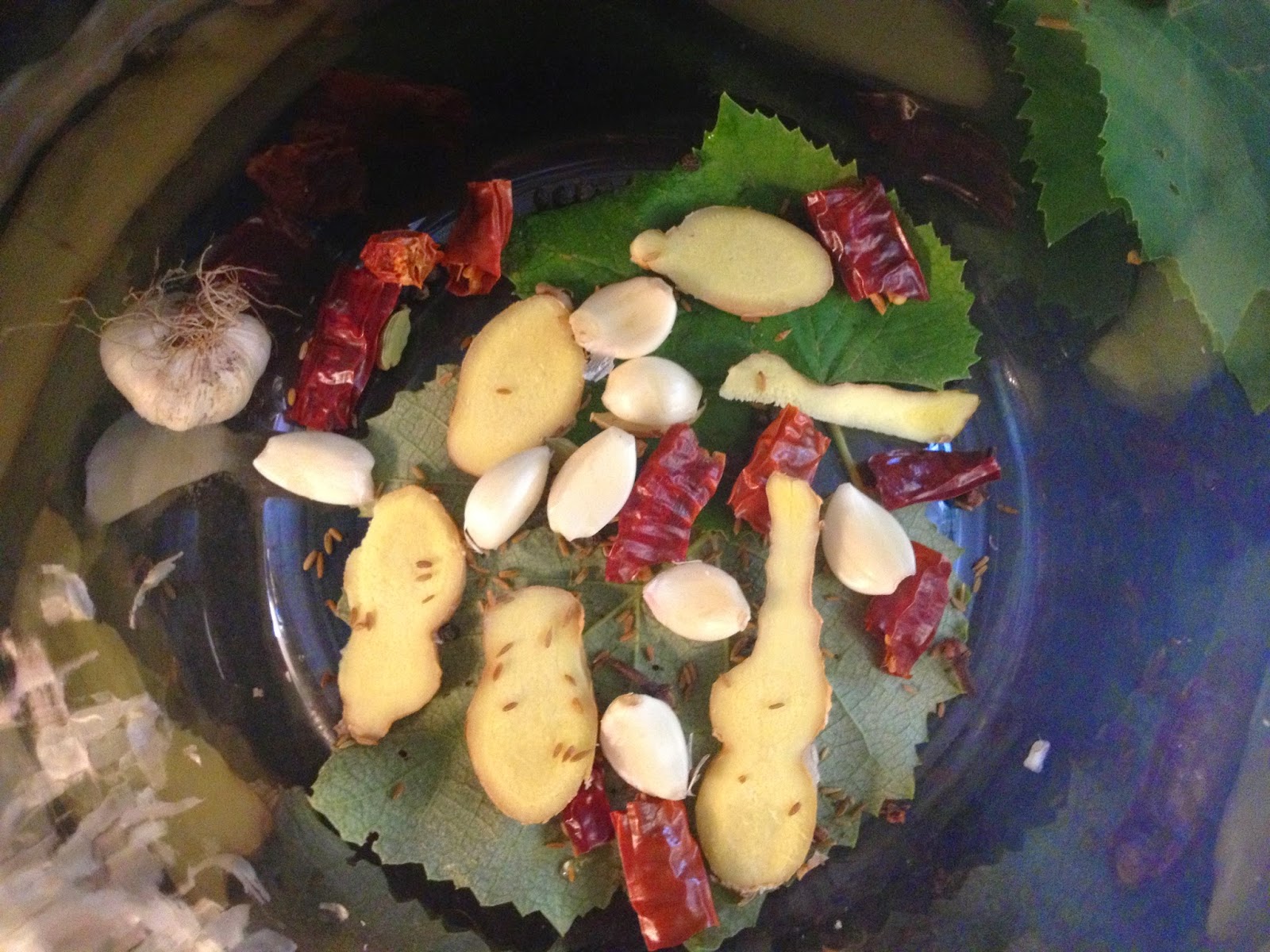One Last Batch of Pickles
This year I missed almost all of pickle-making season while I was in Costa Rica; Kirk took over all pickling duties while I was away. Now that it is September, we are not sorry to see the cucumber vines die back, as we completely overestimated our cucumber needs this year. Before we rip them out, though, we made one last pass to gather all the pickling cukes of gherkin-size or greater.
This last pickle contains no dill, since our dill went to seed before we could get another patch up and growing for fall. That's just as well, since all of our other pickles are made with dill (as you would expect). With that flavor off the table, I went with ginger (because we had it) and some Indian spices for a completely different flavor. They should taste similar to the Curry Sour refrigerator pickles I've made in the past, except that these will be fully fermented and canned.
Ginger Garlic Pickles
3 pounds of small pickling cucumbers
2-4 fresh grape leaves
2 heads of garlic, separated into cloves and peeled
12 large slices of ginger (slice it the long way)
2 cayenne peppers (fresh or dried)
2 Tbs. peppercorns
2 tsp. cumin seed
10 cardamom pods
10 cloves
2 quarts water
3/8 cup kosher salt
1. Line the bottom of your crock with grape leaves, then layer in 1/2 of all the spices (except the salt). Our crock is a gallon-sized glass container:
2. Rinse and drain the cucumbers, and be sure to clip off any remaining blossoms and stems. Layer all of the cucumbers in the crock.
3. Add remaining spices atop the layer of cucumbers. Finish with by covering with a grape leaf or two.
4. In a separate pitcher, stir salt into water until dissolved. Pour brine gently over the cucumbers:
5. Use a small plate or saucer to hold the soon-to-be-pickles under the brine — they should be completely covered. We turn our lid upside down so the handle keeps the saucer submerged. With our larger crocks we use a brick to hold the plate down and just cover the whole thing with a tea towel.
6. Keep the crock in a dark area at room temperature and allow to ferment for about three weeks. By then fermentation should be complete; they will look evenly translucent and will taste yummy. You can store them in the fridge for a "live" food (that is, one that still has all the active bacteria cultures going), or you can process them in a hot water bath for a shelf-stable pickle.
This container is small enough to keep on the kitchen counter, where we can check regularly to make sure that all of the really tiny pickles don't come floating up out of the brine. (I'm not as concerned about the bits of pepper and garlic, which we'll fish out and throw away if they get funky.) We can also lift the lid occasionally to let the air bubbles escape, which lets us know everything is still fermenting away. Kitchen science is fun!





Comments
Post a Comment